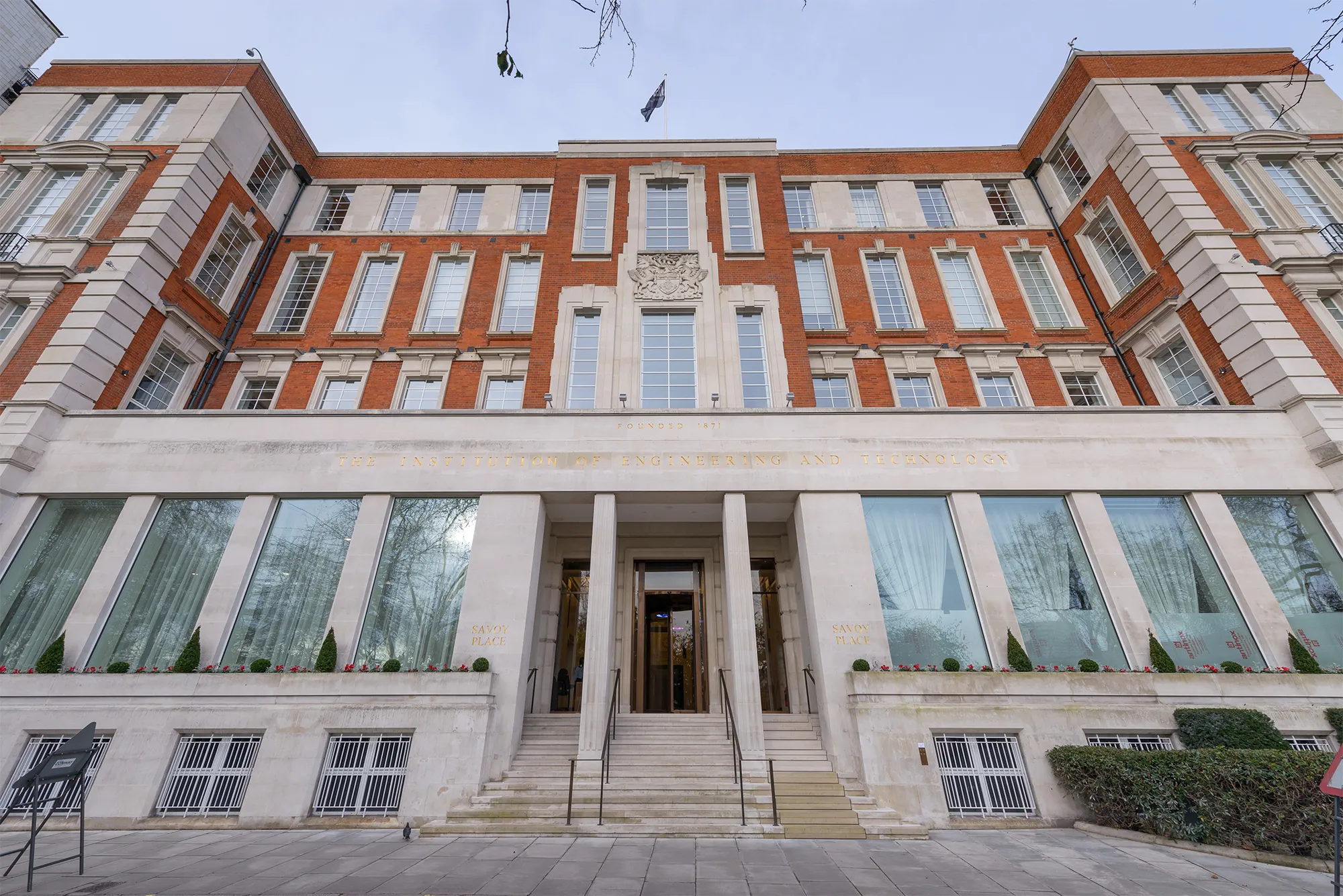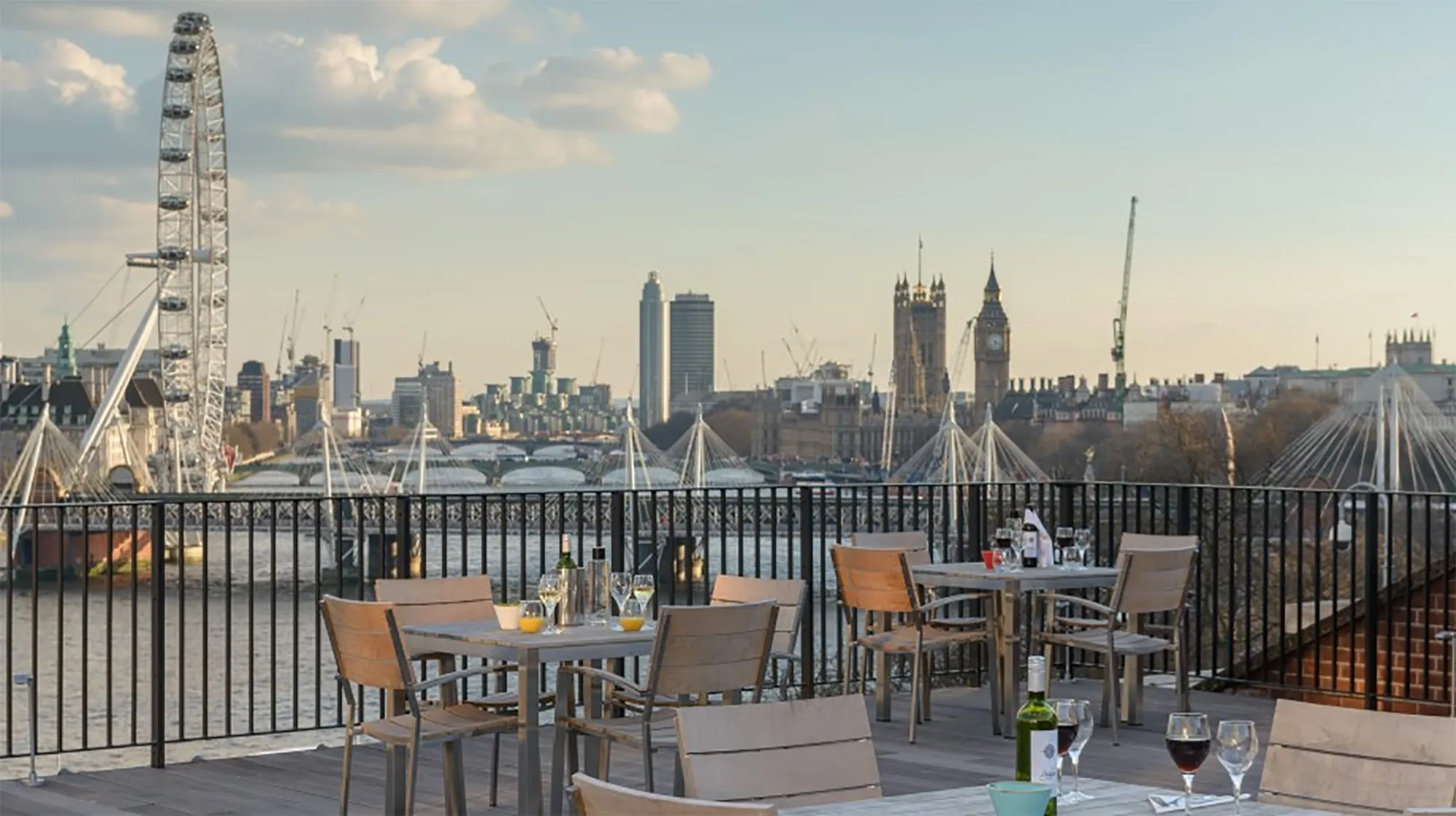Palace, hospital, home to engineering and a modern high-tech conference centre
Published: Mon 18 May 2020
Published: Mon 18 May 2020
Savoy Place, and the adjoining building Savoy Hill House, sit on the north bank of the River Thames between the Savoy Hotel and Waterloo Bridge.
Home to the IEE - now known as the IET - since 1909, it is one of London’s leading conference and meeting venues situated within easy access of Charing Cross and major tube stations.
With meeting rooms to cater for all sized meetings and major events, the dedicated in-house teams (including AV and catering) can ensure a bespoke service ensuring events run smoothly with modern digital functionality and exceptional catering.

In 1242 the site was gifted by Henry III to Peter II Count of Savoy and was called Savoy Manor. During the Middle Ages, the most desirable location for London homes of the nobility was situated on the Strand between the City of London and the Palace of Westminster.
This gave the houses road access and direct water access to the Thames (the river would have lapped against the current steps to Savoy Place nowadays).
Savoy Manor later became the home of Edmund, Earl of Lancaster. During the reign of Edward III, the house became the London residence of John of Gaunt, Duke of Lancaster whose son Henry became King of England.
John of Gaunt turned Savoy Manor into the most magnificent nobleman’s house in England filled with tapestries, ornaments, and jewels.
In 1381, however, due to being blamed for introducing the hated poll tax, a rebellion (the Peasants’ Revolt) demolished the Savoy and destroyed all its contents, they even managed to storm the Tower of London.
What was left of the site still maintained its name and continued to be called the Savoy.
In 1512 Henry VII founded the Savoy Hospital on the site for the poor and needy of London. The building was the most impressive hospital of its time in the country.
The hospital remained on site until the 17th century but it was notorious for scandal and mismanagement. In 1702 the hospital was finally dissolved.

During the 1670s the site was partially turned into barracks and in 1695 Sir Christopher Wren was employed to build a military prison on part of the site. The site continued to be used as such until 1816 when almost all the buildings were demolished to make way for the access road to the new Waterloo Bridge.
The only building that survives from the hospital and prison is the Savoy Chapel and sits behind Savoy Place.
The current Savoy Place, an imposing red brick and Portland stone building, was completed in 1889 and was used as an examination hall for the Royal College of Physicians and Royal College of Surgeons.
On 1 June 1909, the IEE (now IET) bought the lease and proceeded to make alterations to the building including adding an extra floor (with a balcony offering panoramic views of the Thames) and the main lecture theatre which is still clad in its original mahogany.
Whilst not known to many, the then IEE helped support the fledgeling BBC by leasing space in Savoy Place between 1923 and 1932, initially seven rooms and expanding to the West Wing by the end of the year.
Showing the Institution's commitment to providing support to new technologies and innovation which continues to this day through a programme of scholarships, bursaries, and events helping to increase the profile of engineering.
In 2013 the IET embarked on a major refurbishment of Savoy Place, both externally and internally, to adapt the building to changing technology, improve the sustainability of the building and make the most of the stunning riverside views.
Savoy Place now offers unparalleled conference facilities and meeting rooms to cater to all event types and provides modern bespoke member facilities in this modern high-tech world.
Both lecture theatres have been fully upgraded to include the latest AV technology allowing delegates to fully interact with speakers. The 2nd-floor lecture theatre was moved to a central position to allow for the dedicated member area.
The Riverside room almost doubled in size to include the full length of the building offering magnificent views of the Thames and include the latest AV technology allowing for prestige events.
Additionally, to all the improvements to existing rooms, the roof was converted to an event space, the Johnson Terrace. This now offers stunning views of the Thames from St Pauls to Westminster.
